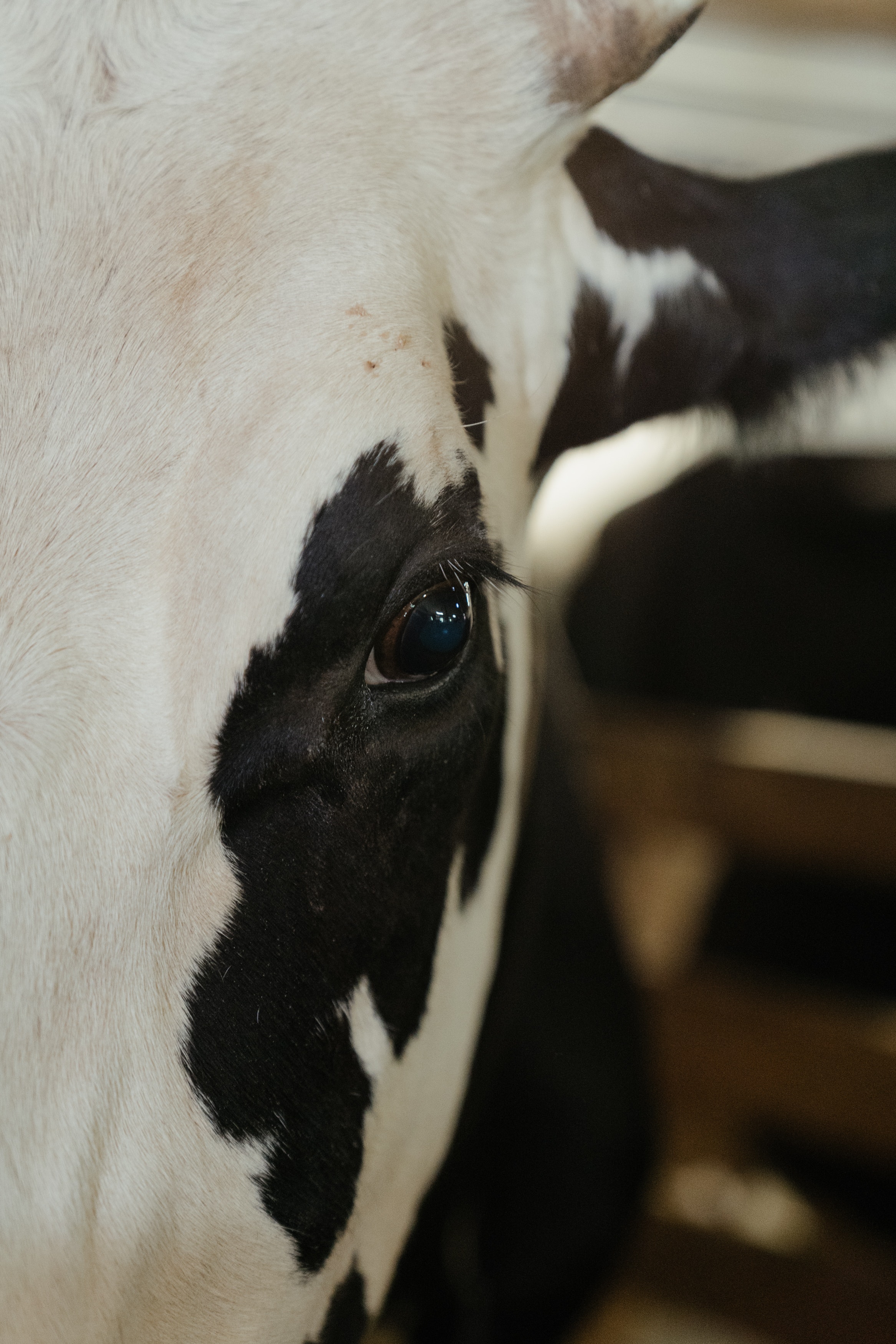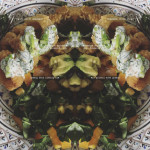The first animals: The history of animal agriculture starts with the domestication of goats and sheep 11,000-15,000 years ago in Mesopotamia. Herd animals were the first animals to be domesticated by early humans because there were loads of benefits to keeping herds, it meant a steady food supply, fibers for clothes, and access to muscle power that enabled humans to cultivate more land and transport goods longer distances. For early humans, the domestication of animals was necessary to avoid starvation (national geographic). As an essential by-product animal hides were used to make clothing and tent, which also plays an essential part of survival. As more early humans started settling in stationary communities rather than moving around as nomadic hunter-gathers, it enabled them to domesticate pigs and cows as well. Also around 15,000 years ago.

Also check out: Watch, Listen and Read This // about veganism
But were early humans living in complete symbiotic harmony with nature? Unfortunately, that is not exactly the case.
- When the first humans reached Australia 45,000 years ago their hunting practices caused 90% of large mammals to go extinct
- When the first humans reached America 15,000 years ago their hunting practices caused 75% of large mammals to go extinct
- Humans drove over 50% of large mammals to extinction way before they ever planted the first wheat field or shaped the first metal tool
- Archaeological finds from all around the globe show the same story, we see the same history from early settlers communities in Africa, Eurasia, and from the myriad islands.
Selective breeding: with the domestication of animals came selective breeding, which will become important later. This is a technique where you gradually remove certain traits and characteristics by removing the option for those genes to reproduce. Over time this meant that animals would become calmer and easier to work with. You can also selectively breed animals to produce more milk, wool, eggs, etc. than they naturally would by only allowing those animals that produce a lot to keep reproducing. You selectively grow certain plants, which is why many cultivated crops look vastly different from 100 years ago, like at the wild banana, or the ancestor of corn for instance. Dogs were domesticated from gray wolves but have changed significantly through thousands of years of breeding. The early wild chicken weighed about 2 pounds, but over time they have been bred to weigh as much as 17 pounds, additionally wild chicken would hatch a small number of eggs once a year, while domesticated chickens today lay more than 200 eggs. As such both the domesticated plants and animals we know today have very little in common with their wild ancestors (national geographic).

Also check out: From Anti-Vegan to Vegan For Life // big feelings storytime
The downside to the domestication of animals: while animals have played a historically crucial role in terms of human survival capability and technology – which we have to admit that it has, there has also been some downsides to the domestication of animals (apart from the extinction of wildlife). For once, as humans started to keep various animals in their homes, like chickens, goats, pigs, and others, the risks of diseases spreading from animals to humans became a serious threat to the health of communities. This risk would over time increase as communities, populations and the amount of kept livestock grew bigger. When diseases spread from animals to other animals and then to human, mutating in the process it is referred to as a zoonose. Prior to the 20th Century, the best-known zoonoses were rabies, anthrax, glanders, tuberculosis, plague, yellow fever, influenza, and certain zoonotic parasitic diseases (Blancou and Meslin, 2000).
Humans actually only successfully domesticated about 20 wild animals, which seems like none compared to the thousands of wild animals in nature, and even more so thousands of years ago. However, today over 90% of all animals on earth are livestock, but more on that later. Both the domestication of animals and the ability to cultivate the land for plants have been the main reason why humans were able to evolve skills, communication, culture, and much more. When we went from spending the majority of our day searching for food to being able to produce more food close to our homes, we suddenly had free time on our hands to evolve other skills. The advantages of animals is however not just something left in history books, while some countries have very little use for animals for labour, that is not the case everywhere. Today, in developing countries, animals provide as much as 99% of the power used in agriculture while 20% of the world’s populations depend on animals for moving goods, which means that they still play a crucial role when it comes to the survival of some communities.

Also check out: 10 things I wish someone had told me about veganism // EATING PLANTS 101
Okay, now I am going to jump in time, quite a bit, to 1066. There are many, ma-ny advances that were made in this, frankly huge gaps in human history, like how the Greeks learned how to combine to two plants to make apples, pears, and plums possible 300 years BC. Or how we as communities start organizing and specializing in certain trades aka the invention of jobs. Or how colonials in America based their food supply on livestock and thus deliberately cut off indigenous communities’ food supply by forcing wild animals to relocate.
Renaming foods: at one point in time, many people started adapting culinary names for certain foods. The cow became beef once it went from being an animal to an ingredient. Pig became pork, sheep became mutton, and calf became veal, and so on. How we address food, and what we call meat, and animals is actually super important today as well, and it all started with the Norman conquest of Brittan in 1066. The French took over England and French words started influencing British culture. This was because most Anglo-Saxons were hunters and “lower” class. They kept using the same word for the animal and meat, while the finer establishments and the “upper” class, who had no affiliation with the production, breeding, capture, or slaughter of the animal, using the “fancy” new culinary descriptions. As such “boeuf”, “mouton”, “poulet”, “porc”. The reason why deer meat is called “venison” is most likely because of the Latin word “venor” which means “to hunt” or “to pursue”. Actually, during this time any animal that was killed in the Royal Forests was referred to as venison. As such, renaming meats have had a significant effect on how that meat is perceived and plays a vital part in separating the idea of a living animal from its consumable parts. But now I’ll have to make another time jump.

Also check out: HOW TO RESPOND TO ANTI-VEGAN ARGUMENTS // canine teeth, evolution & plants have feelings
The age of efficient improvements: Prior to the developments of the 1800s farmers had led their livestock to run freely. Every farmer also had a very small number of animals, because a farm only had to export goods to short distances, and thus only provide food for a small number of people. It was in the 1800s that farmers started to fence in their livestock as well – previous most livestock roamed freely around. I think it is also interesting to note that many of the technological advances that were made as early as in the Renaissance and then again shortly before the 1800s in the Age of Enlightenment made these developments possible because people became interested in efficiently and scientific improvements. Bear in mind that factory farming is still nowhere near being invented yet.
Factory farming: Because the first signs of factory farming began in 1920 in the US, but what is it? Here is a formal definition: a system of rearing livestock using highly intensive methods, by which poultry, pigs, or cattle are confined indoors under strictly controlled conditions. The first animal to be farmed on a large scale was chickens, and for nearly 50 years chicken was the only animal farmed in large number. With the invention of antibiotics in the ’30s, farmers were able to have more livestock without the increased risk of diseases, and this led to a huge boom in the production of meat, dairy, and eggs. I really recommend watching the documentary Eating Animals, where they also include how the ”invention” of factory farming actually came to be a mistake; a farmer had ordered 50 chickens, however, 500 chickens were delivered due to a mistake and the farmer decided to keep them. Would factory farming had been invented around this time if it was not for this incident? Probably, there were many scientific and cultural advances that pushed food production in this direction, so it can be argued that it would have happened either way. It was especially during this period that farmers intensively bred selected chicken to increase egg production. Because more product meant more profit.
In the 1970’s we began to see mass production of pigs, shortly after cows were included in the factory farming operation as well. Which leads up to today. In 2020 roughly 94% of all animals farmed for human consumption are raised on factory farms, also referred to as Concentrated Animal Feeding Operations.

Also check out: I CHALLENGED MY BOYFRIEND TO GO VEGAN FOR 100 DAYS
Today’s factory farming
Impact: And this brings us to what I guess most people are interested in, which is the environmental impact of today’s animal agriculture. Today, more than 80 billion animals are slaughtered for food every year.
Air pollution: Factory farming is responsible for over 37% of global methane emissions, methane is a greenhouse gas that is 20 times more potent than CO2. Factory farming is also responsible for 64% of global ammonia emissions (UN news), and 50 to 85% of ammonia emissions in the U.S., according to EPA. Here’s a look at the top five sectors by metric tons of NH3 emissions per year. Source: EPA 2014 National Emissions Inventory v.2. The industry also produces harmful compounds like hydrogen sulfide which propose a serious risk to human health. It also accounts for 65% of nitrous oxide emissions, which is nearly 300 times more potent than CO2. According to the Food and Agriculture Organization of the United Nations, the animal agriculture sector—which includes the production of feed crops, the manufacturing of fertilizer, and the shipment of meat, eggs, and milk —is responsible for 18% of all global CO2 emissions. Between 1990 and 2006, methane emissions from pig and dairy cow manure in the United States increased by 34% and 49%. This increase, according to the U.S. Environmental Protection Agency, is a result of the shift toward confining pigs and cows in larger facilities using liquid manure management systems (The Humane Society of the United States).
Deforestation: In the United States alone, over 260 million acres of forest have been cleared to make room for crop fields, most of which are used to exclusively grow livestock feed (paper production accounts for about 20% of all deforestation. While a whopping 75% of the deforestation in the Brazilian rainforest is caused by animal ag). The majority of the land clearing is to make room to grow feed for livestock, primarily corn and soy, and this feed is used by farms everywhere in the world. Only about 6% of all soy grown is meant for human consumption – the majority is used to feed animals. Deforestation for animal grazing and feed crops emits approximately 4 billion tons of carbon dioxide every year. Furthermore, in the US 41% of the land is used for livestock and animal feed production. In Denmark, we use 2/3rds of our country’s land for animal agriculture. Why? Because feeding a large animal, like a cow, than a human. The general ratio of feed that goes into meat that is produced is 1:3 (sustainable dish), meaning that switching to plantbased agriculture for human consumption would take up a lot less space.
Water pollution/usage: It takes more than 1800 liters of water to produce 1 pound of beef, which is the equivalent of 7 years of drinking water for an average consumer (foodtank). Industrial agriculture uses about 70% of the world’s freshwater supplies (Pesticide Action Network) and brings about 75% of all water-quality-related problems in America’s rivers and streams alone (for perspective only less than 1% of all water in the world is accessible). While manure and waste from livestock can be used as fertilizer, an overwhelming amount of it is washed out in waterways. Actually, livestock produces more than 1 million tons of manure in the US every day. Manure is often stored in huge open containers, which have a tendency to overflow or leak, especially in areas where flooding is common, and this leads to severe water pollution. The manure contains undigested antibiotics, which means that traces of antibiotics end up in water used by humans and animals. You might think, neat, free medicine, but sadly this overexposure to antibiotics will create drug-resistant bacteria, making it harder and harder to prevent diseases spreading between people, and moreover, overexposure to antibiotics will make it increasingly difficult to cure previously easily treatable conditions. When drug-infused manure is washed into waterways they create dead zones with toxic algae. Manure polluted water also results in an increased level of phosphorous and nitrogen, causing big health issues for people, as well as oxygen deprivation and nutrition pollution in the water, destroying aquatic life (NRDC).

Also check out: BEST VEGAN BEGINNER’S TIPS // for picky eaters
Monocultures: With a constantly growing industry, factory farming requires a lot of feed for its livestock, and general modern agriculture has resulted in an overwhelming amount of cultivated land, the majority of it to feed livestock. This creates monocultures, which means that large areas of land only host one type of plant. This completely disrupts ecosystems because animals cannot thrive without natural diversity (David Tilman). The biggest monocultures in the world include wheat, corn, soybeans, and rice (and only a small percentage is grown to feed humans). Furthermore, growing monocultures requires large amounts of synthetic fertilizer, which is based on petroleum, and starve off insects, bees and also destroys soil and water (Earth Observing System 2020).
How did we get here, and how should we go forward? Animal agriculture, and specifically factory, has been what seems to be an inevitable invention. The increase and advances made in our food systems, although both highly problematic and unsustainable are often seen as necessary strives towards a healthy economy, with the start of factory farming happening right after the Great Depression. Furthermore, the consumption of meat has historically been something that has kept humans safe and alive for literally thousands of years. However, the industry, as it looks today, is unsustainable and has already had great ecological consequences. If the industry keeps increasing as it is, we will have no more healthy soil in 60 years. Today most consumers have basically no relationship with the production of their food, other than buying it in a supermarket, and that, along with the global norm of using culinary language to describe meats, have led us to a place where we have very little understanding and empathy for this part of our consumer culture, even though it affects all of us. Most consumers have been separated from the production of their food, which also means that we tend to value food less, waste food more, and feel very little responsibility for our purchases because we are rarely faced with the consequences.
So in this specific context, it does not really matter whether or not you identify as a vegan, as a vegetarian, or as a meat-eater, there is no way around the fact that the way meat is produced today has to change. Whether or not you think humans were made to eat meat (if you want my take I have a video about some of these issues as well), does not really matter because whether or not that’s true, does not change the fact something is wrong, many farmers from within the industry even says so. I don’t think we can change this industry overnight that would not be economically sustainable either. But there are lots we can do to push our food systems in a more sustainable direction.
- Base your meals on seasonal and local veggies, they have the lowest footprint and are often easily accessible
- Reduce meat, dairy, and eggs from your diet, I have beginners’ guides, recipes, and tips to get you started. And you can watch my story of going from an anti-vegan to vegan for life for my thought on how to go about it.
- Spoiler alert: you don’t need to go vegan overnight, you don’t even need to go fully vegan to help – because not everybody is able to, but for the most part we are all able to reduce, and reduce significantly.
- Start by cutting out the products with the highest carbon footprint like the products from cows and sheep and work your way down the list.
- Request plant based meals in restaurants or cafeterias, host meatless Mondays, and help normalize food without animal products
- If you don’t feel like you can identify with the “vegan” label, then don’t use it, just keep avoiding animal products in your own way
- Check out plant based alternatives for stuff like milk, butter, cheese, etc., even if you still eat meat, check it out. I started baking and cooking with plant based milks and butters because you cannot taste the difference and it made those food feel less intimidating.
- Vote for green policies that push polluting industries in a greener direction, and use your power as a voter (if you can vote) to hold those industries accountable for their mess. It is not your fault that chicken nuggets cost less than carrots, and our food systems need to change.






Hi Gittemary
I am doing a research project about the impact of beef, the research just has to be pear reviewed to if you could let me know where you found your information that would be very helpful.
You can find my list of sources in the video descriptions matching this post – there is a link to the video in the top 🙂